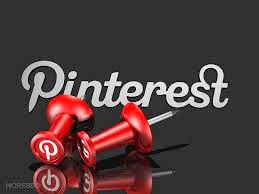Ways Pinterest can be used in the classroom
Pinterest can be used in the classroom in for many purposes. Some of the main reasons teachers use Pinterest in the classroom are for inspiration and lesson plans. As a teacher sometime you just get mind blocked and cant come up with anything that the students will enjoy. Sometimes teachers just need a little help and guidance and that it what Pinterest offers.
Teachers use Pinterest for inspiration not just on lesson plans, but also to help them decorate their classroom and bulletin boards. Classroom environment is very important because the more comfortable a student is the better they learn. Pinterest can also be used to organize a classroom. There is nothing more irritating than not being able to find the supplies and tools you need to keep the learning flowing smoothly.
Another way Pinterest is used in the classroom is for lesson plans and printouts. Not just to give teachers ideas, but also Pinterest allows teachers to show off lessons and printouts they have created that they are really proud of. This also allows other teachers to implement these awesome lessons. It is always nice to share great ideas with others.
Pinterest is a great place for teachers to grow and develop their teaching skills.
I have created my own project based learning lesson plan for my education technology class to show how Pinterest can be used to incorporate projects into a teachers lesson. The lesson I did is called Warhol meets Haring gestures. Completing this assignment has really help me see how useful Pinterest is to teachers and I was surprised at how many lessons I was able to find.
Here is how to do the Warhol meets Haring project.
Day 1:
Go to computer lab and do research on both artist and gesture drawings. Have 3 images of Andy Warhol's work, 3 images of Keith Haring's work, and 2 images of gesture drawing and glue them in your sketch books. Along with your images write down the following information on each artist.
- What country he’s from
- When he was born
- When he died
- What medium he prefered to work with
- What his work is suppose to express

Students will choose a gesture they like from the print outs they found the day before.
The teacher will call on volunteers to come up in front of the class and model their gesture. (Everyone that wants to be a model will get the chance to model but students do not have to model a gesture if they do not want to.)
As the gestures are modeled students will sketch them in their sketch books to the best of our ability.(The teacher will go over how to sketch a gesture with students before we get started.)
After students finish the gesture drawings they will pick their favorite and create a model of that gesture using heavy duty aluminum foil.
Material needed: Heavy duty aluminum foil and scissors
***HELPFUL TIP****
It is easier to build the basic frame and then cut small pieces of aluminum foil and ad volume where desired.
Day 3:
We are going to use our aluminum foil figures to create a piece of art that is inspired by the work of Andy Warhol and Keith Haring.
1. Lay out all the materials you will need. These materials include:Felt
Construction paper
cup of water
black paint
paper towels
foam brushes
sharpie
Scissors
water color with brush
2. Lay your colored construction paper out in front of you and place your aluminum figure in the position you like on the paper. ( Make sure that it lays as flat as possible on the paper. That will make it easier to trace.
3. When you have your figure how you want it take your sharpie and trace the figure. Your line will be a little bumpy because of the texture of the aluminum but that's ok.
4. Once you have your first line drawn go back and thicken the line and clean it up and make it look nice.

5. Choose a water color to color in your figure that is a different color than your construction paper. Be sure to stay in the line and use good craftsmanship. To get a good solid color paint the figure once, let it dry, and paint it again a second time. Do not get the paper too wet at one time or your paper will wrinkle.

6. Set your construction paper with your colored in figure to the side and grab your felt sheet. Lay your aluminum figure onto the piece of felt and trace it with your sharpie just like you did on the piece of construction paper.


7. Cut out the figure on your felt with your scissors. Cut it a little inside the line you drew so that the figure is slightly smaller than the figure on your construction paper.

8. Get a piece of old newspaper and lay your cut out felt figure on it and use your sponge brush to paint it black. Be sure to do this step fairly quickly so the paint does not have time to dry.

9. Use the painted felt figure as a stamp and place it on your construction paper gently. Place it on your construction paper slightly off centered from you water color painting. Press down gently to make sure the paint gets on the paper. When you think the paint has been successfully stamped onto your paper CAREFULLY lift your felt figure back off of the construction paper.





















